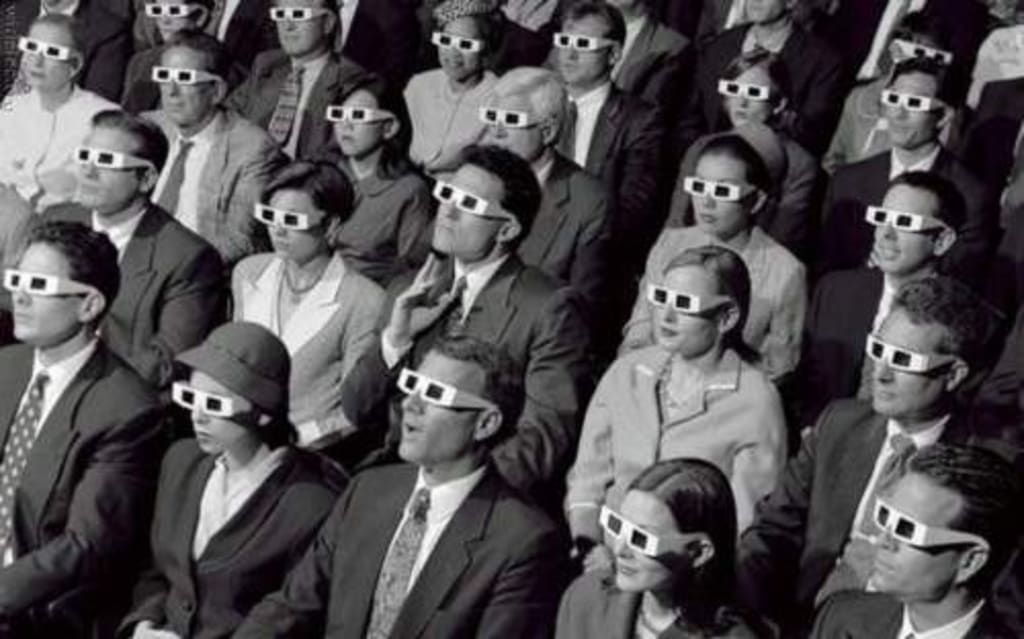Cutting Edge Appeal
An expose on the evolution, portrayal, and influence of literary serial killer fiction.

“Serial killers are everywhere!
Well, perhaps not in our neighbourhood, but on our television screens, at the movie theatres, and in rows and rows of books at our local Borders or Barnes.” -Pat Brown.
Who cannot help but be reminded of Hannibal Lecter’s culinary preferences when eyeing liver at the local butcher shop, whilst sipping a nice Chianti or preparing some fava beans? Who has not, at some stage, dragged their hand along a foggy shower curtain in imitation of the renowned murder scene within Alfred Hitchcock’s Psycho?
One can begin with the commonplace observation that fictional serial killers have undoubtedly become a significant part of popular culture and “the phenomenon of common knowledge”. This is undeniably reflective of the enduring, widespread appeal currently upheld by many contemporary audiences for fictional compositions that revolving around murderous individuals. Amidst the spectrum of fictional mediums of the genre, several works including novels, films, television series and songs are just a mere selection of textual forms in which composers have capitalised upon the continuing collective allure. This capitalisation has undoubtedly resulted in an extensive, and exponentially increasing, repertoire of serial killer representations within contemporary texts. But what is more disturbing than the violent movie scenes of these psychotic maniacs are the magnetic pull in which responders are so captivated by the compositions which explore the mind of an individual who, by basic definition, “murders more than three victims?”
How do composers effectively generate such a mass responder fascination with their constructed serial killers through their respective forms? How have their compositions been able to influence, transform and challenge the conventions of literary serial killer fiction? By delving into a selection of some of the most iconic to most modern and indisputably popular serial killer depictions from the kingpin of Alfred Hitchcock’s 1960 Psycho to Bret Easton Ellis’s 2000 American Psycho to the renowned 2006 television series, Dexter by James Manos Jr, how have these award-winning writers and directors generated such a widespread, continuing cultural fascination for each of their respective homicidal protagonists?
In the radical shift of the common understanding of crime, a shift in focus into the criminal act of the actor had emerged the category into a genre exploring the dangerous individual. By the turn of the century, the modern serial killer began to develop with this shift as the serial killer had become classified as a “species of person”, the definition of a serial murderer had transcended from being “one who kills” to becoming “a killer.”With the media being a supplement to why these individuals receive the amount of recognition they do in contemporary society, the widespread media coverage is overwhelmingly extensive in volume and scope. As a result, the term serial killer was immortalised and established as a household name, and with the push from the media, serial killers in fictional compositions had become more than just a string of homicides – it has been established as a career.
The emergence of the genre had helped manufacture a serial killer persona and essentially a market for death, while the trade in “murderabilia” (serial killer memorabilia) alludes to a general fan desire to invest in, know more about, and get closer to the famous killer.
Action figures, posters, bobble-heads, clothing, greeting cards, calendars, drink coasters, mugs, bumper stickers, board games and iPhone applications as well as outfits for dogs. This is not only just an inventory of some of the available merchandise and memorabilia of the serial drama series Dexter, but it is a manifestation of the substantial popularity that is behind the critically and publicly acclaimed television series. Directed by James Manos Jr, the “darkly funny” serial drama had accumulated an immense following of aficionados and fanatics, since its premiere in 2006. This is evident in the previously mentioned memorabilia, the multitudes of fan sites, forums, devoted webpages and videos dedicated to Dexter on the internet as well as its record-breaking ratings.
But what is it all about? Why has the show garnered the praise it has today? As one of the most contemporary explorations of serial killers within the frame of fictional literature, Dexter revolves around the daily life of protagonist, Dexter Morgan - a forensic technician specialising in blood splatter expert for the Miami Metro Police Department’s homicide division who moonlights a secret parallel life as a vigilante serial killer, hunting down other murderers who have slipped through the cracks of the justice system. Differentiating itself from the facile ‘slice and dice’ melodramas of the genre’s predecessors, Dexter presents a subjective, first person perspective depiction of a serial killer which mainly focuses upon Dexter Morgan’s background, his opinions, his emotions as well as his relationships with others.
“The more things are forbidden, the more popular they become.”
- Mark Twain.
As Lieutenant Maria LaGuerta of Dexter states, the “fascination with serial killers is an American pastime.” Evidently, the manner in which James Manos Jr has effectively created the mass, accumulative appeal and acceptance for this serial drama is both conventional and idiosyncratic in nature in juxtaposition to the achievement of such intrigue, fascination and engagement by the public as well as other composers who fictitiously illustrate the notion of serial murder. Through the manipulation and use of literary techniques, characterization and thematic concerns, James Manos Jr has been successful in cementing his composition as a captivating, influential and ultimately a popular television series with a mass “cult viewership.”
About the Creator
Lawrence Roqueza
linkedin: www.linkedin.com/in/lawrence-roqueza
instagram: https://www.instagram.com/johnmayersintern/






Comments
There are no comments for this story
Be the first to respond and start the conversation.